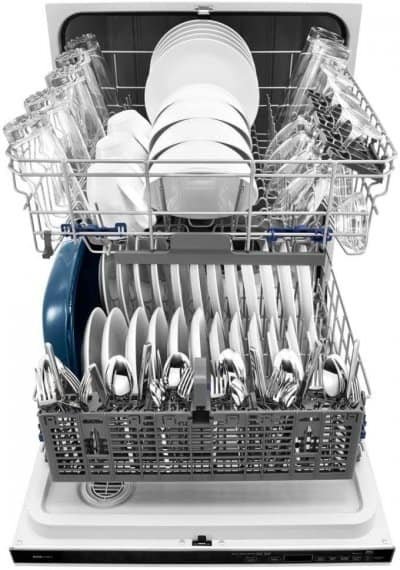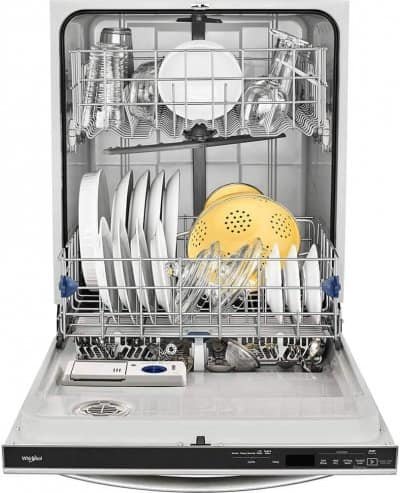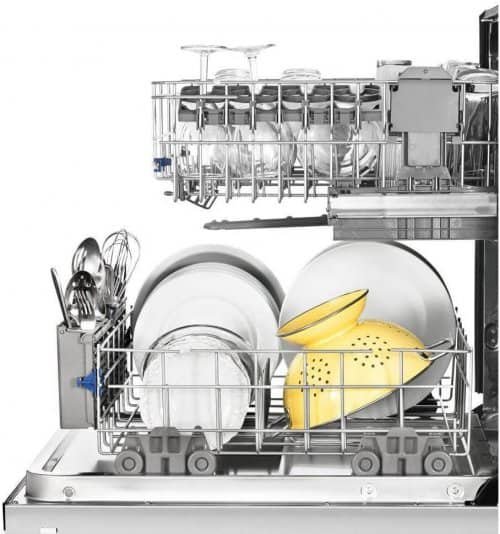When you’re faced with a dishwasher that isn’t draining, it can be frustrating and time-consuming to find the root of the issue. Fortunately, the most common cause of a Whirlpool dishwasher not draining is an easily fixable problem. If your Whirlpool dishwasher isn’t draining correctly, then this article will provide you with an easy solution for identifying and fixing the issue.
Table of Contents
Check Water Hose
For some homeowners, dealing with a Whirlpool dishwasher that’s not draining can be extremely frustrating. If your Whirlpool dishwasher isn’t draining properly, you should start by checking the water hose. The water hose is responsible for carrying away soapy water to the drain after each cycle. To make sure it’s functioning correctly, you’ll need to check it for kinks or clogs and then clear any blockages that may exist.
To do this, first shut off the power to your dishwasher at the breaker box and disconnect the water hose from the back of your machine. Make sure that you place a bucket underneath before doing this to collect any remaining water in the hose. Once disconnected, check for kinks and inspect both ends of the hose for any build up of debris or mold growths.
Check Drainage Tube
The drainage tube of a Whirlpool dishwasher helps to move water from the dishwasher’s interior into the drain system. A blocked or clogged drainage tube can cause water to remain in your dishwasher after a cycle has finished. Fortunately, checking and clearing the drainage tube is an easy task that can be completed with a few simple steps.
First, locate the drain hose at the bottom of your Whirlpool dishwasher. Check for any blockages inside the hose – these could include bits of food or other debris blocking its path. If there are any blockages, remove them with a pair of tweezers or needle-nose pliers before reattaching it securely to ensure that no further leaks occur.
Clean Filters and Accessories
Clean filters and accessories may be the culprit. To ensure that your dishwasher is running at peak efficiency, it’s important to regularly clean the filters and other parts of the appliance. This can help to prevent clogs or blockages from developing, which can cause a host of issues including poor draining performance.

To start cleaning your Whirlpool Dishwasher, begin by checking for any visible debris on the filter screen located at the bottom of the machine. Remove any food particles and dirt with a soft brush or cloth. Next, carefully remove the filter itself and rinse it thoroughly using hot water. Finally, inspect hoses and connections for signs of sediment buildup or clogging as this can also lead to drainage issues with your dishwasher. Replace any damaged or worn parts as necessary to keep everything in top condition!
Check Motor and Pumps
If you are having trouble getting your Whirlpool dishwasher to drain properly, there may be an issue with the motor or pump. The motor is responsible for powering the wash cycle and the pump helps move water out of the appliance. To determine if either one of these parts needs to be repaired or replaced, it’s important to check them both.
First, inspect your dishwasher’s motor for signs of damage like burned-out wiring or broken fan blades. If any components appear worn-out or damaged, it’s a good indication that the motor needs to be replaced. Next, check the pump by removing any debris from its housing and inspecting its impeller blades; they should be free of cracks and other wear and tear. You can also run tests on each part to make sure they’re working correctly.
Reset the Dishwasher
If your Whirlpool dishwasher is not draining properly, there are a few simple solutions to try. The most common issue is a clogged filter or drain hose. Start by resetting the dishwasher so that it can re-initiate its self-diagnostic cycle and clear out any debris. Resetting the unit only takes a few minutes, and you don’t need any special tools. First, locate the control panel on the front of your dishwasher. Most Whirlpool models have two buttons: “Normal” and “Cancel/Drain”. To reset the dishwasher, press both buttons at once for three seconds until you hear a beep from inside the unit; this indicates that it has been successfully reset.
What is the common error that led your Whirlpool Dishwasher not to Drain properly?
Common errors that can cause a Whirlpool dishwasher not to drain properly include:
- Incomplete wash cycle (dishwasher not running through the full cycle)
- Drain is clogged (blockage in the drain line)
- Drain hose is kinked (restriction in the drain hose)
- Drain hose is clogged (blockage in the drain hose)
- Garbage disposal incorrectly installed (not properly connected to the dishwasher)
- Stuck check valve (valve that prevents water from flowing back into the dishwasher is stuck)
- Failed drain pump (dishwasher’s pump that pumps water out of the dishwasher is not working properly)
Other things to check include:
- Clogged filter (build up of food particles and debris in the filter)
- Defective drain valve (valve that controls the flow of water out of the dishwasher is not working properly)
- Air gap (device that prevents water from flowing back into the dishwasher is clogged)
- Flush the drain hose (clean out any debris or blockages in the drain hose).

How to Prevent your Whirlpool Dishwasher from Clogs?
To help prevent clogs in a whirlpool dishwasher, it is important to take the time to properly clean and maintain it. Start by giving your dishwasher a basic cleaning. This includes wiping down the outside with a damp cloth and scrubbing off any visible dirt or soap residue from the interior walls of the appliance.
After this, you can use a mixture of vinegar and baking soda to wipe down the interior walls once again for an extra deep clean. This can help remove bacteria that lingers after washing dishes.
To further prevent clogs in your whirlpool dishwasher, make sure you are using only small amounts of detergent when washing dishes. If you tend to over-sud your appliance, consider using liquid detergents instead of powder as they dissolve easier in water and will not leave behind residue or build up inside your dishwasher’s pipes.

